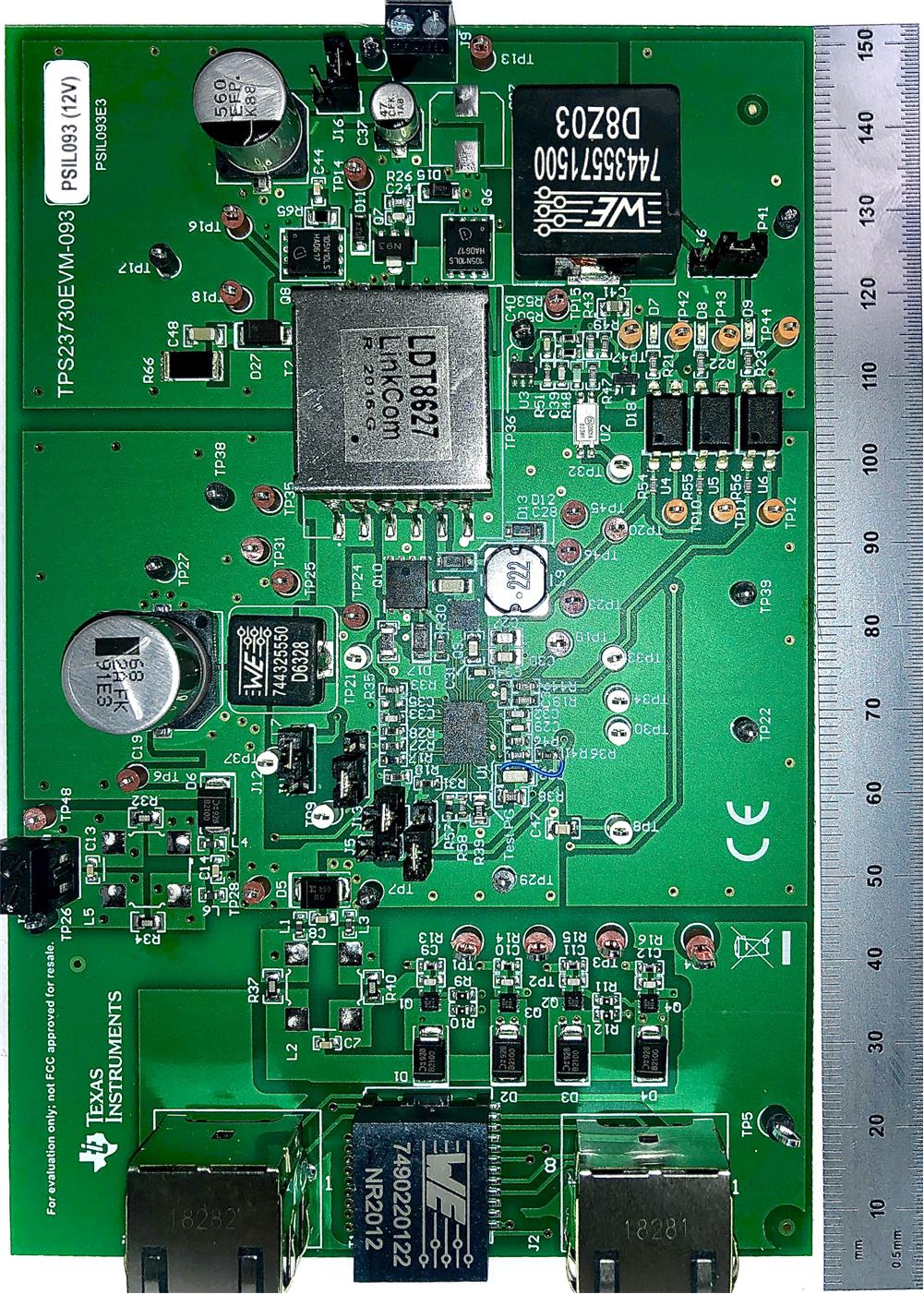TIDUEX8 September 2020
3.1.1 Hardware
 Figure 3-1 TIDA-050045 Reference Board
(Top)
Figure 3-1 TIDA-050045 Reference Board
(Top)Table 3-1 Table of Jumpers and Connectors
| TYPE | LABEL | CONNECTOR/JUMPER | DESCRIPTION |
|---|---|---|---|
| Input | Ethernet Power | J1 | Data output after data transformer |
| Ethernet Data | J2 | Input connector for PoE | |
| Adaptor Input | J3 | 37-V to 57-V adaptor input. J4 jumper must be connected to enable adaptor power delivery | |
| PD Configuration | APD Divider | J4 | Enable to allow adaptor power delivery |
| PPD | J5 | Enable to provide lower input voltage turn on*. Range is around 19-V to 32V. | |
| DTHR |
J8 |
Spread Spectrum Frequency Dithering control | |
| EMPS | J9 | Automatic MPS control | |
| SCDIS | J10 | TPL serial code setting | |
|
TPL / TPH / BT Output |
J11 |
TPH / TPL / BT output control | |
|
Output | VOUT | J6 | 5-V output of design |